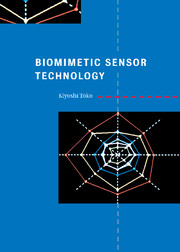1 - Sensor and measurement
Published online by Cambridge University Press: 23 October 2009
Summary
What is a sensor?
Humans have five senses: sight, hearing, touch, smell and taste, as illustrated in Fig. 1.1. These senses are very important because humans act after receiving information from the outside world.
Automatic doors open by checking for the presence of people using the device that corresponds to the sense of sight. These devices are common throughout the world. In fact, when we come across a nonautomatic door, we often assume that it must be self-operating and wait for a while for it to open, and then we become aware that it is nonautomatic. The infra-red light is usually used in detecting a person at automatic doors. The history of the automatic door is very old; in fact, it was used in Alexandria, the capital of ancient Egypt, more than 2000 years ago. It was made in such a way that it could open when fire was started at the altar in front of the door of the temple.
The sensor plays the role of reproducing the five senses or surpassing them. Figure 1.2 shows the correspondence between the biological system and the artificial system in the process of reception and the following action. The sensor is the device that mechanizes the ability of five organs, i.e., eye, ear, skin, nose and tongue, in the senses of sight, hearing, touch, smell and taste, respectively.
- Type
- Chapter
- Information
- Biomimetic Sensor Technology , pp. 1 - 25Publisher: Cambridge University PressPrint publication year: 2000



